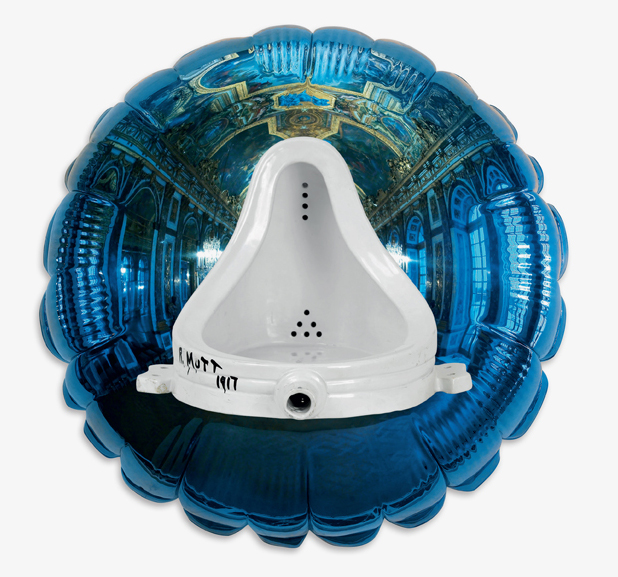
What do Koons and Duchamp have in common?
A new exhibition looks at the ways in which the work of these two art giants shares a world view
About 100 years ago, Marcel Duchamp had a thing for window shopping. Back in 1913, in the notes to accompany his work The Large Glass, he wrote about “shop windows hiding coitus through a sheet of glass.” It’s odd to think of this giant of modern art, having experimented with Post-Impressionism, Fauvism and Cubism, turning his attention to window displays. Yet, as our book, 30,000 Years of Art, makes clear, Duchamp was ahead of his time.
“Countless contemporary artists have acknowledged a deep debt to him,” explains the book. “His highly conceptual form of art inspired numerous twentieth-century movements, including Pop Art, Minimalism, Op Art and Conceptual Art. His work exists in a space between painting, sculpture and installation and asks the questions, ‘Who is an artist?’ and ‘What is art?’”
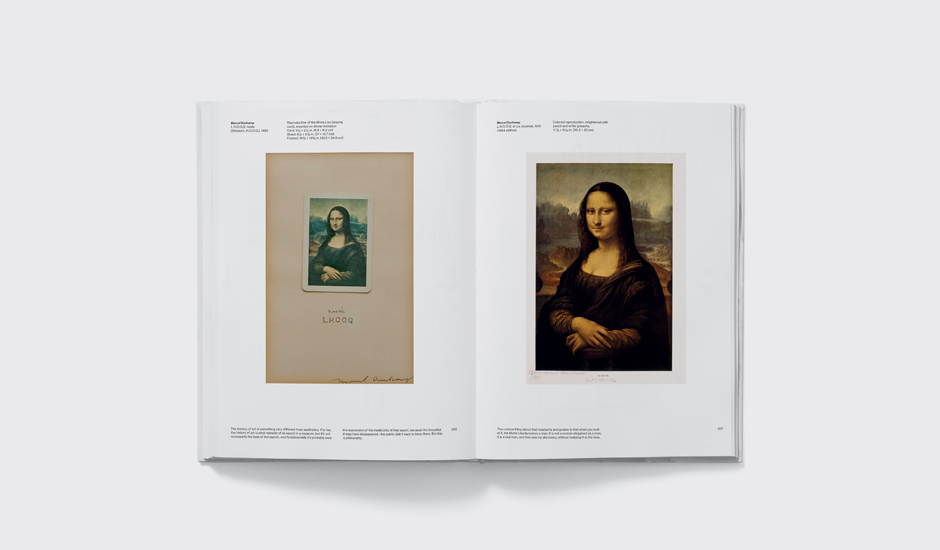
One contemporary artist who pushed Duchamp’s questions far harder than others, is Jeff Koons. “Koons’s work references Duchamp’s ready-mades and their appropriation of everyday items as high art objects,” explains 30,000 Years of Art. “Koons courted controversy, exhibiting basketballs in tanks of water, vacuum cleaners in Plexiglas, and polished porcelain replicas of popular culture items, such as toys and the pop star Michael Jackson.”
This controversial streak may explain why many within the art world praise Duchamp more readily than Koons. There might be a little snobbery too, since, rather than developing his work within a high-brow, modernist European environment, as Duchamp did, Koons supported himself as a Wall Street commodities broker before finding success as an artist in the 1980s.
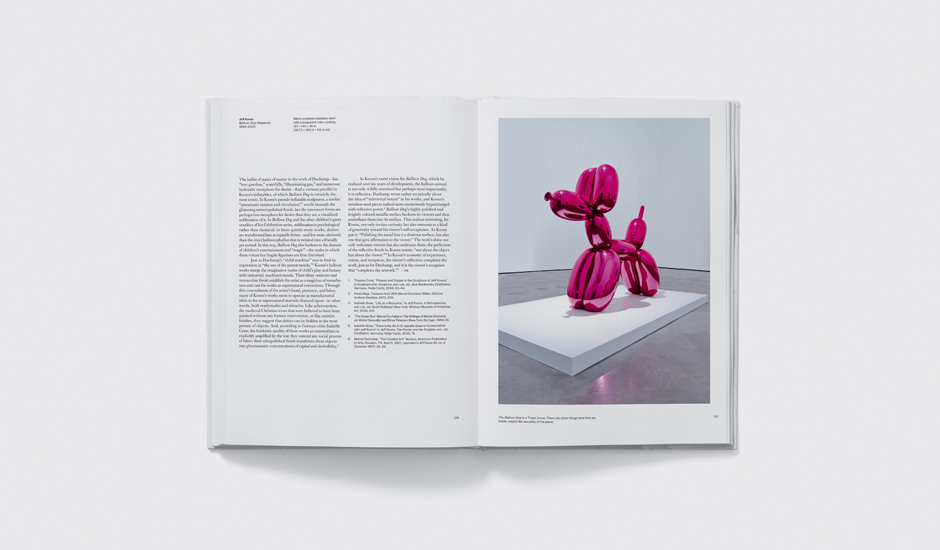
However, a new exhibition, opening this Sunday, 19 May, at Museo Jumex in Mexico City, focusses less on these differences, and more on the common ground between these two artists.
The show is called Appearance Stripped Bare: Desire and the Object in the work of Marcel Duchamp and Jeff Koons, Even, it is curated by the New Museum’s Massimiliano Gioni, and it pairs up Koons and Duchamp’s pieces to “address key concepts about objects, commodities, desires, and the artist’s relationship to society.”
Of course, the desires for those commodities have only risen since Duchamp’s death in 1968, yet the show - and the accompanying catalogue – still picks out plenty of commonalities between the two, who did so much to highlight the aesthetics of consumer desires.
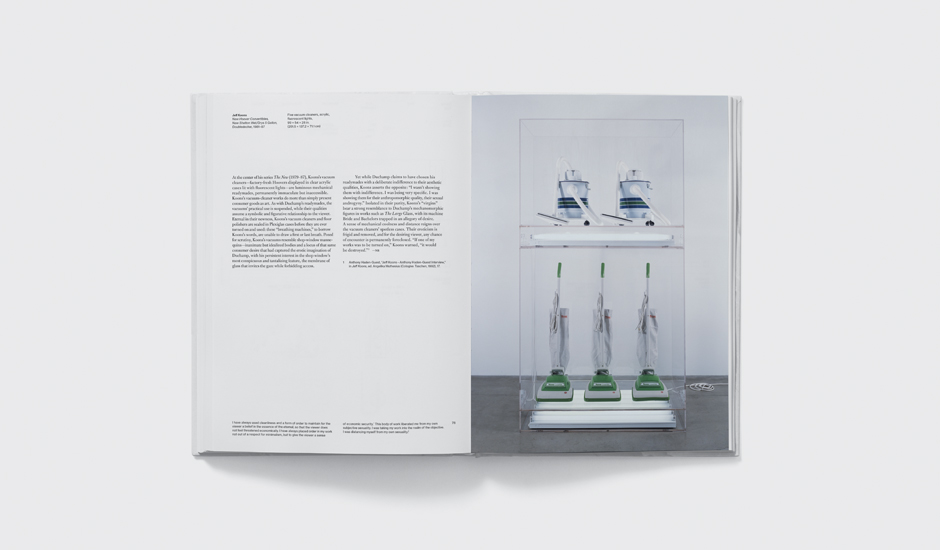
Consider, as the show puts it, the way “Marcel Duchamp and Jeff Koons share a striking preoccupation with exploring the ways in which everyday objects can evoke desire and project, or reflect, sexuality;” or how “both artists found that mechanical apparatuses and products of technology yielded rich metaphors for human bodies, sexuality, and the workings of desire;” or, indeed how “both developed their own philosophies of desire and taste and, in doing so, championed new ways of thinking about the artist’s identity and persona.” Decades may separate their creative peaks, but in many ways, the artists look at the world through the same (shop) window.
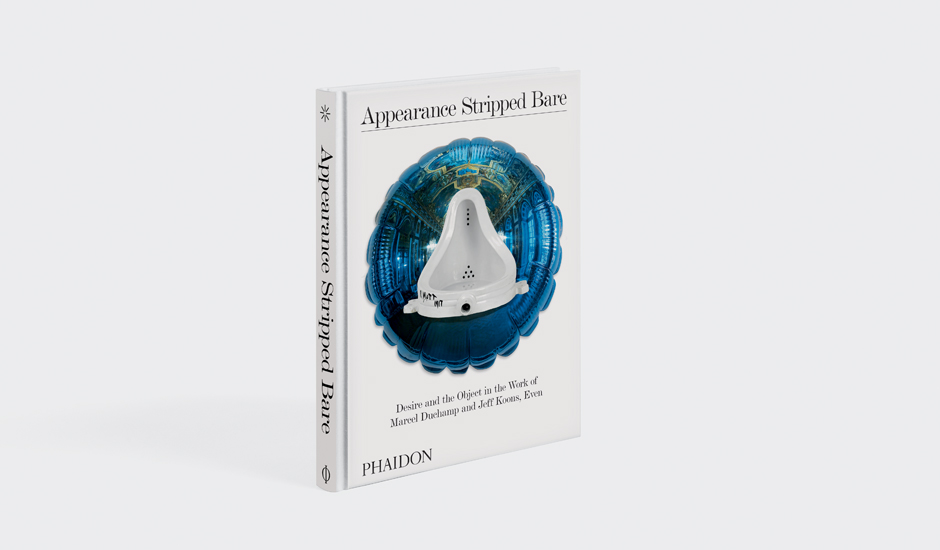
For more on Koons and Duchamp, order a copy of Appearance Stripped Bare here. For more on each artist’s place in the greater story of human creativity, order a copy of 30,000 Years of Art here.